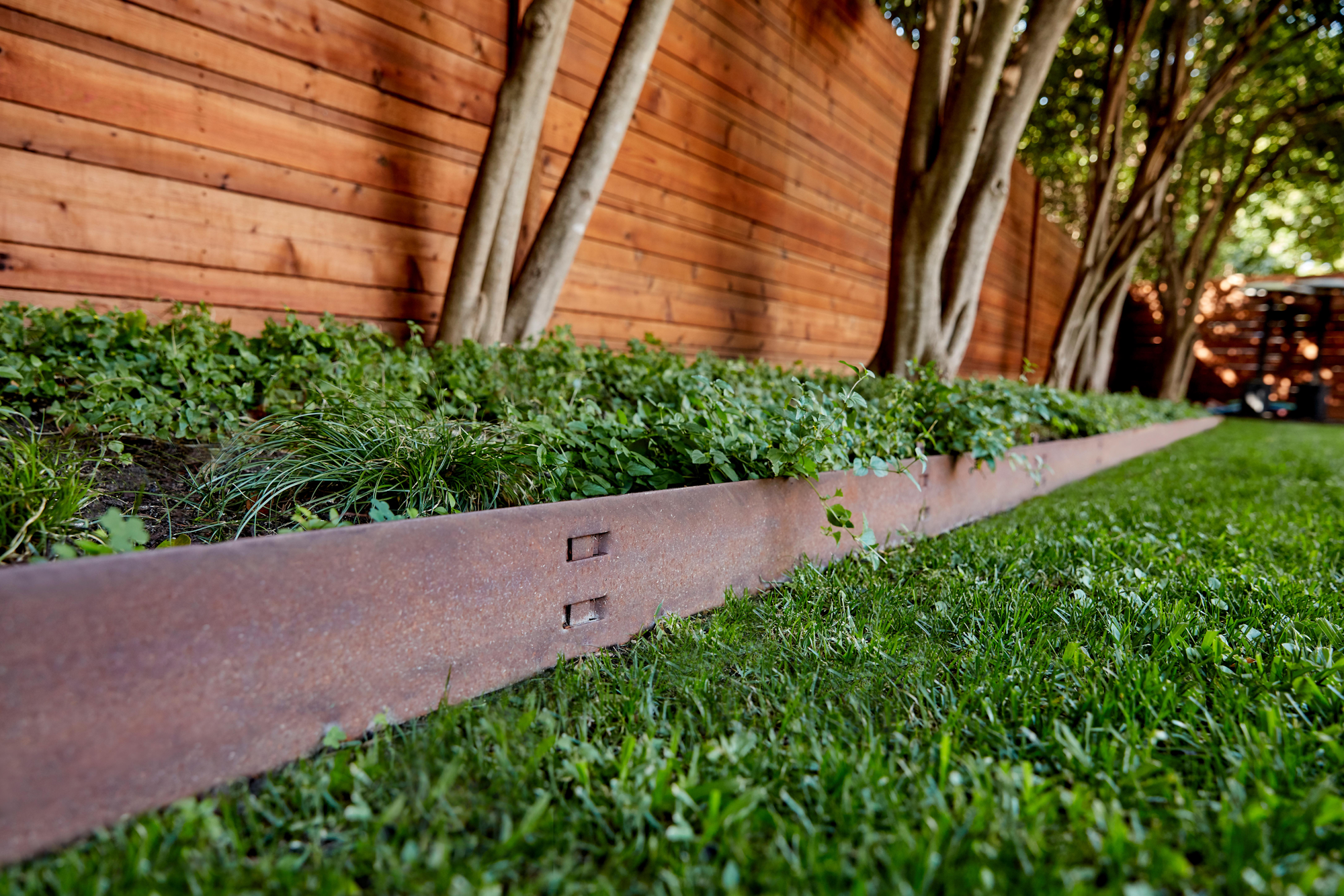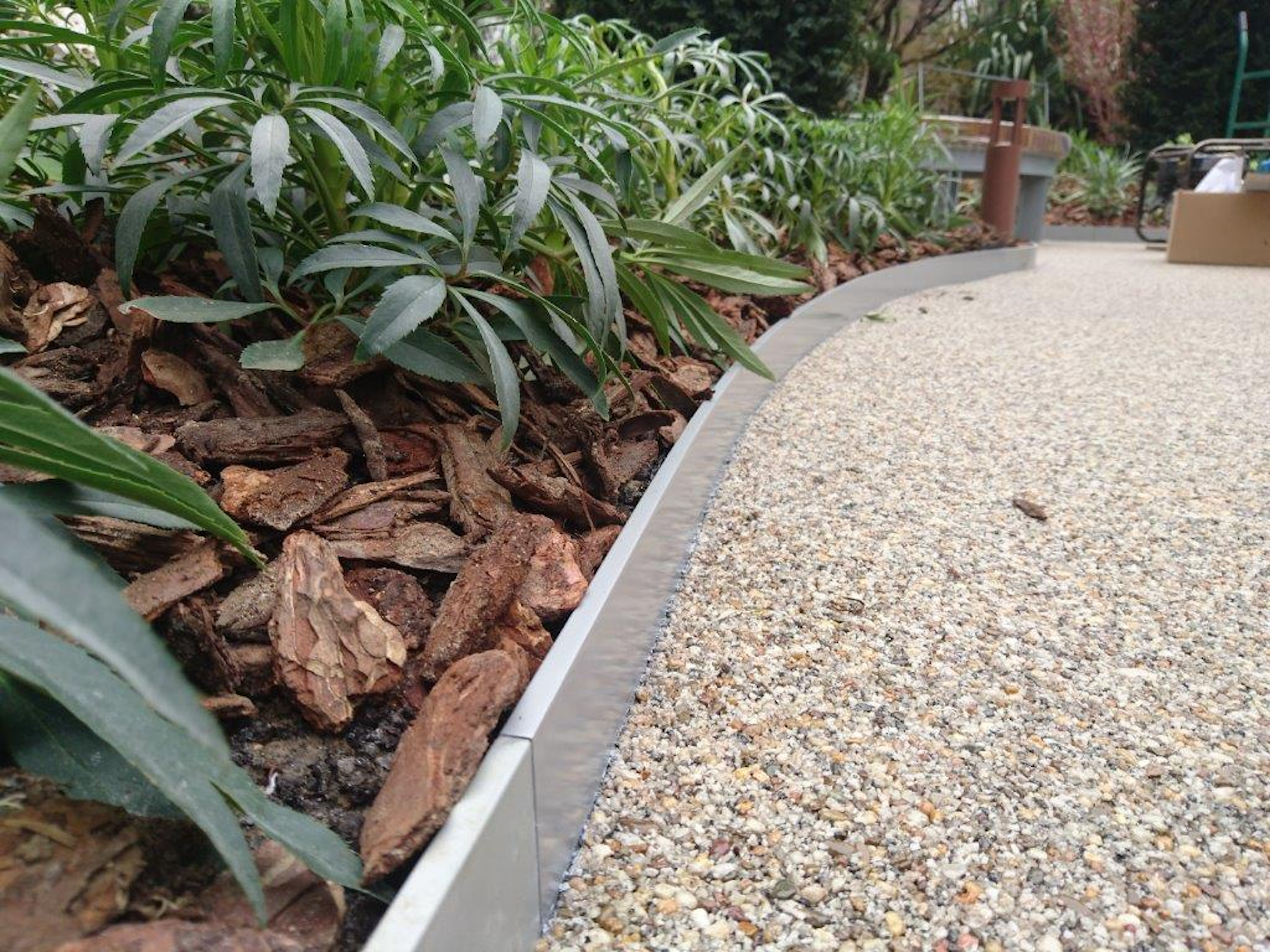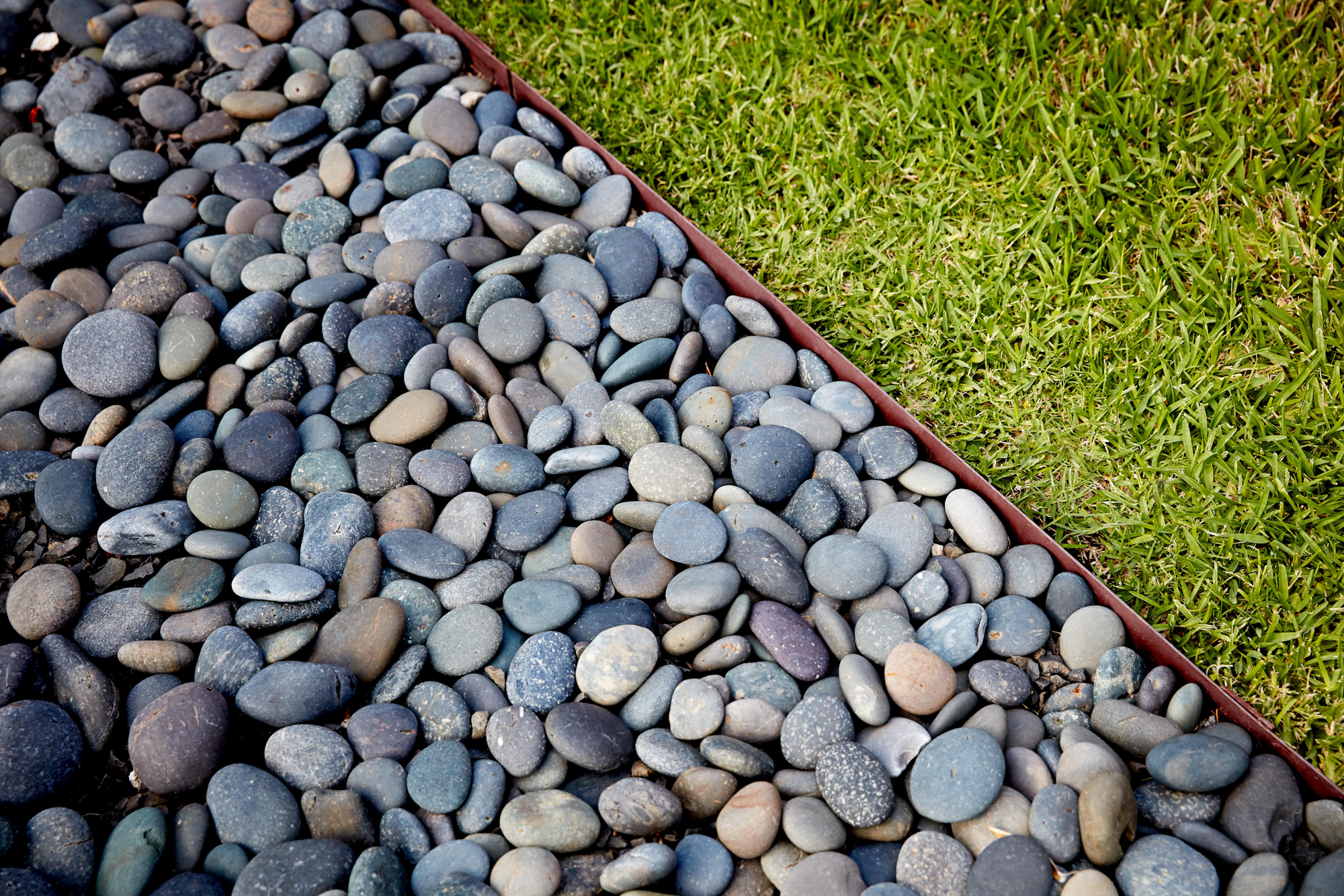Metal Edging Solutions from Kinley
Explore Metal Edging

In the realm of sustainable landscaping, the choice of materials plays a crucial role in determining the overall environmental impact of a project.
When it comes to edging solutions, the debate between metal and concrete has gained significant attention.
Let's explore the environmental implications of these two popular options and why metal edging is emerging as a more sustainable choice.

Metal edging, particularly aluminium and steel, offers superior durability compared to concrete. While concrete is known for its strength, it can crack and deteriorate over time, especially in harsh weather conditions.
Metal edging's longevity translates to fewer replacements over time, reducing the need for new materials and minimising waste. The extended lifespan of metal edging contributes to a lower environmental footprint in the long run.

The production of metal edging, especially aluminium, is generally more energy-efficient than concrete manufacturing. The metal industry has made significant strides in reducing its carbon footprint through recycling and improved production techniques.
However, it's worth noting that concrete production has also seen advancements in sustainability, with some manufacturers incorporating recycled materials and reducing energy consumption.
Metal edging is significantly lighter than concrete, which means more units can be transported in a single trip. This efficiency in transportation leads to reduced fuel consumption and lower carbon emissions associated with product delivery.
Concrete, being heavier, requires more energy for transportation, potentially increasing its carbon footprint.
One of the most significant advantages of metal edging is its recyclability. At the end of its life cycle, metal can be fully recycled without losing its properties.
Aluminium, in particular, is 100% recyclable and can be recycled indefinitely. This closed-loop system significantly reduces the demand for raw materials and energy in producing new edging products.
While concrete can be recycled as aggregate, the process is less efficient and the end product is of lower value compared to recycled metal.

Metal edging systems offer several environmental benefits during installation and maintenance:
Concrete edging, while durable, may require more maintenance over time due to cracking and settling issues. It also offers less flexibility in design and installation, potentially leading to more disruptive landscaping processes.

Metal edging, particularly when using materials like Corten steel, can blend seamlessly with the natural environment. This compatibility allows for designs that work in harmony with existing ecosystems, promoting biodiversity and natural aesthetics.
Concrete, while versatile, often presents a more artificial appearance and can be more disruptive to natural landscapes.
While the initial production of metal may have a higher carbon footprint than concrete, the long-term environmental benefits often outweigh this initial impact.
The durability, recyclability, and reduced maintenance needs of metal edging contribute to a lower overall carbon footprint throughout its lifecycle.
Concrete, despite its lower initial carbon footprint, may have a higher long-term impact due to its weight, potential for replacement, and limited recyclability.

While concrete remains a viable option with its own set of benefits, the overall environmental advantages of metal edging position it as the preferred choice for sustainable landscaping. By opting for metal edging, landscapers and gardeners can contribute to reducing their environmental impact while creating beautiful, long-lasting outdoor spaces.